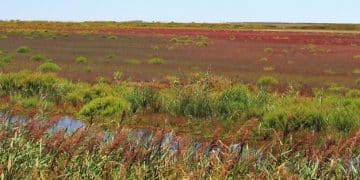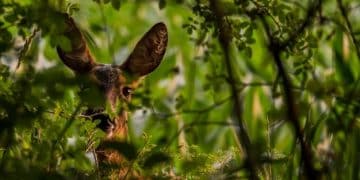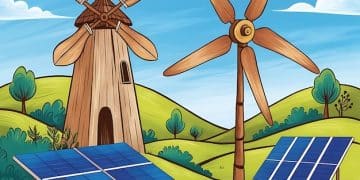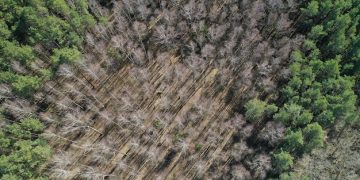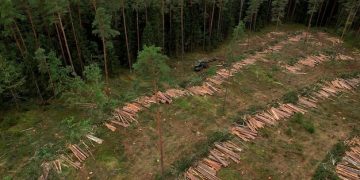How Technology Enhances Wildlife Monitoring and Conservation
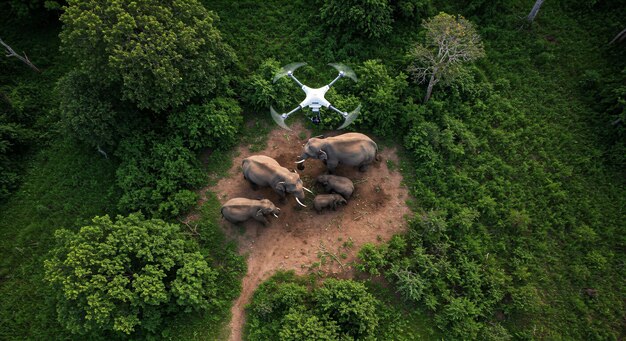
Technology significantly improves wildlife monitoring and conservation efforts by providing advanced tools for tracking animal populations, habitats, and environmental changes, enabling more effective and data-driven conservation strategies.
The relentless march of technology offers unprecedented opportunities for enhancing wildlife monitoring and conservation efforts. From tracking endangered species to combating poaching, technological advancements are reshaping how we protect our planet’s biodiversity. Let’s delve into how technology can be used to improve wildlife monitoring and conservation efforts, exploring the tools and strategies that are making a difference.
The Role of Technology in Modern Wildlife Conservation
Technology is no longer a futuristic concept in wildlife conservation; it’s an indispensable tool. Its applications span across various domains, providing conservationists with real-time data, enhanced analytical capabilities, and innovative methods to combat threats to wildlife.
By leveraging technology, conservationists can make more informed decisions, implement effective strategies, and adapt quickly to changing environmental conditions. Here’s how technology is revolutionizing wildlife conservation.
Real-Time Monitoring and Data Collection
One of the most significant impacts of technology is the ability to gather real-time data. Traditional methods of wildlife monitoring were often time-consuming and labor-intensive.
Enhanced Analytical Capabilities
Beyond data collection, technology provides the tools needed to analyze vast datasets efficiently. This helps in identifying patterns, predicting trends, and understanding complex ecological relationships.
- Geographic Information Systems (GIS): Analyzing spatial data to understand habitat use and changes over time.
- Machine Learning: Predicting animal behavior and movement patterns based on historical data.
- Data Visualization: Creating visual representations of data to communicate findings effectively to policymakers and the public.
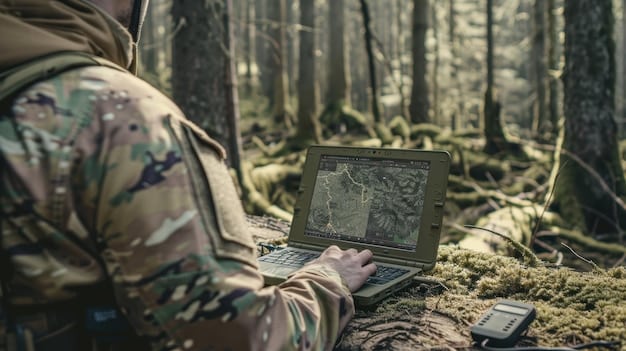
In conclusion, technology serves as a critical enabler, providing real-time data and enhanced analytical capabilities that are essential for effective wildlife conservation strategies.
Tracking Technologies: From GPS Collars to Acoustic Monitoring
Tracking technologies have evolved significantly, offering versatile solutions for monitoring wildlife. These tools provide insights into animal movement, behavior, and habitat use, enabling conservationists to develop informed strategies.
From traditional methods like GPS collars to more advanced techniques such as acoustic monitoring, these technologies are essential for understanding and protecting wildlife populations.
GPS Collars and Satellite Tracking
GPS collars have been a staple in wildlife monitoring for decades. These devices are attached to animals, allowing researchers to track their movements via satellite.
Acoustic Monitoring
Acoustic monitoring uses sensors to record and analyze soundscapes, providing valuable data on animal presence and behavior. This is particularly useful for species that are difficult to observe directly, such as birds and nocturnal animals.
- Bioacoustics: Identifying species based on their unique vocalizations.
- Real-time Analysis: Detecting illegal activities such as poaching through sound recognition.
- Long-term Monitoring: Tracking changes in biodiversity over time.
Tracking technologies play a vital role in providing detailed insights into animal behavior and habitat use, making them indispensable tools for modern wildlife conservation.
Camera Traps and Remote Sensing: Observing Wildlife Unobtrusively
Camera traps and remote sensing technologies offer unobtrusive methods for observing wildlife. These tools allow researchers to gather data without disturbing animals or their habitats, providing valuable insights into population dynamics and behavior.
By capturing images and data remotely, conservationists can monitor wildlife in challenging environments and gain a comprehensive understanding of ecosystems.
Camera Traps for Population Monitoring
Camera traps are remotely activated cameras that capture images or videos when triggered by motion or heat. These devices are strategically placed in habitats to monitor animal presence and abundance.
Remote Sensing Technologies
Remote sensing technologies use satellites and aerial platforms to collect data about the Earth’s surface. This data can be used to monitor habitat changes, assess vegetation cover, and detect environmental degradation.
- Satellite Imagery: Monitoring deforestation and habitat fragmentation.
- LiDAR: Creating three-dimensional maps of forest structure to assess habitat quality.
- Thermal Imaging: Detecting wildlife in dense vegetation or at night.
In summary, camera traps and remote sensing technologies provide critical data unobtrusively, allowing for effective monitoring of wildlife populations and their environments.
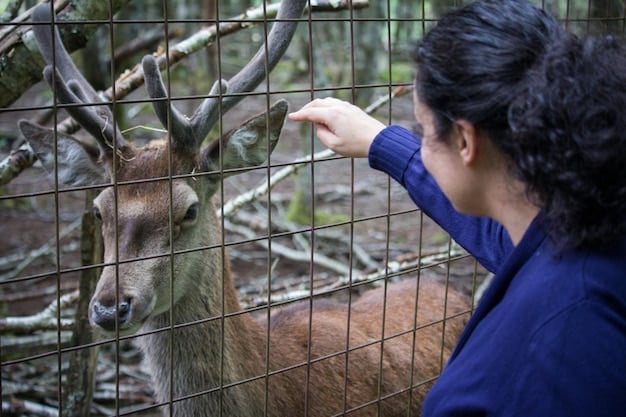
Using Drones for Wildlife Surveys and Anti-Poaching Patrols
Drones, or unmanned aerial vehicles (UAVs), have become powerful tools in wildlife conservation efforts. Their ability to cover large areas quickly and efficiently makes them invaluable for surveys, anti-poaching patrols, and habitat monitoring.
Drones offer a cost-effective and versatile solution for gathering data and protecting wildlife from illegal activities.
Wildlife Surveys with Drones
Drones can be equipped with high-resolution cameras and sensors to conduct wildlife surveys. They can capture aerial images and videos, providing accurate data on animal populations and habitat characteristics.
Anti-Poaching Patrols Using Drones
Drones are increasingly used for anti-poaching patrols in protected areas. Equipped with infrared cameras, they can detect poachers at night, providing crucial information for law enforcement.
- Real-time Monitoring: Providing immediate alerts to rangers about potential threats.
- Cost-Effective Surveillance: Reducing the need for expensive manned patrols.
- Data Collection: Gathering evidence of poaching activities for prosecution.
In conclusion, drones offer invaluable support for wildlife surveys and anti-poaching efforts, making them essential for protecting vulnerable species and their habitats.
Data Analysis and Artificial Intelligence in Conservation
Data analysis and artificial intelligence (AI) are transforming wildlife conservation by providing powerful tools for processing and interpreting vast amounts of data. AI algorithms can identify patterns, predict trends, and automate tasks that were previously time-consuming and labor-intensive.
By leveraging these technologies, conservationists can make more informed decisions and implement effective strategies to protect biodiversity.
AI for Species Identification
AI algorithms can be trained to identify species from images and sounds. This is particularly useful for analyzing data from camera traps and acoustic monitoring systems.
Predictive Modeling for Conservation
Predictive modeling uses AI to forecast future trends and events that may impact wildlife. This can help conservationists anticipate threats and develop proactive strategies.
- Habitat Loss Prediction: Identifying areas at risk of deforestation or degradation.
- Poaching Risk Assessment: Predicting areas where poaching is likely to occur.
- Climate Change Impact Modeling: Forecasting the effects of climate change on wildlife populations.
Data analysis and AI are revolutionizing conservation efforts by enabling faster and more accurate insights, leading to effective protection of wildlife and habitats.
Citizen Science and Community Involvement Through Technology
Technology empowers citizen scientists and local communities to play an active role in wildlife conservation. Mobile apps, online platforms, and social media tools enable people to contribute data, report sightings, and participate in conservation initiatives.
By engaging the public, conservation efforts can be amplified, and communities can become stewards of their local ecosystems.
Mobile Apps for Data Collection
Mobile apps allow citizen scientists to collect and submit data on wildlife sightings, habitat conditions, and environmental changes. This data can be used to supplement traditional monitoring efforts and provide a more comprehensive understanding of ecosystems.
Online Platforms for Collaboration
Online platforms facilitate collaboration between researchers, conservationists, and the public. These platforms allow people to share information, discuss conservation issues, and coordinate conservation activities.
- Data Sharing: Making research findings accessible to a wider audience.
- Community Forums: Facilitating discussions about conservation issues and solutions.
- Collaborative Projects: Coordinating efforts to monitor and protect wildlife.
In conclusion, technology promotes citizen science and community involvement, enabling widespread participation in conservation efforts and fostering a sense of stewardship for the environment.
| Key Point | Brief Description |
|---|---|
| 📡 Real-Time Monitoring | Tracks animal movement and behavior using GPS collars and sensors. |
| 📸 Camera Traps | Captures images of wildlife unobtrusively for population monitoring. |
| 🤖 AI Data Analysis | Uses AI to identify species, predict trends, and automate data analysis. |
| 🛰️ Remote Sensing | Monitors habitat changes via satellites and aerial platforms. |
Frequently Asked Questions (FAQ)
GPS collars enable conservationists to track animal movements, study habitat use, and understand migration patterns. This data helps in designing conservation strategies tailored to specific species.
Camera traps unobtrusively capture images and videos of wildlife, allowing researchers to monitor populations, study behavior, and identify species in various habitats without disturbance.
Drones equipped with infrared cameras can detect poachers at night, providing real-time alerts to rangers. They also gather evidence for prosecution, making anti-poaching efforts more effective and safer.
AI algorithms can quickly and accurately identify species from images and sounds, reducing the time and labor involved in data analysis. This enables faster conservation responses.
Mobile apps allow citizens to collect and submit data on wildlife sightings, which supplements traditional monitoring efforts. This engages communities and fosters environmental stewardship.
Conclusion
In conclusion, technology is an indispensable ally in the ongoing battle to protect our planet’s wildlife. From real-time monitoring and data analysis to community involvement and anti-poaching efforts, technological innovations are transforming how we understand and conserve biodiversity. By embracing these advancements, we can build a more sustainable future for both wildlife and humanity.
